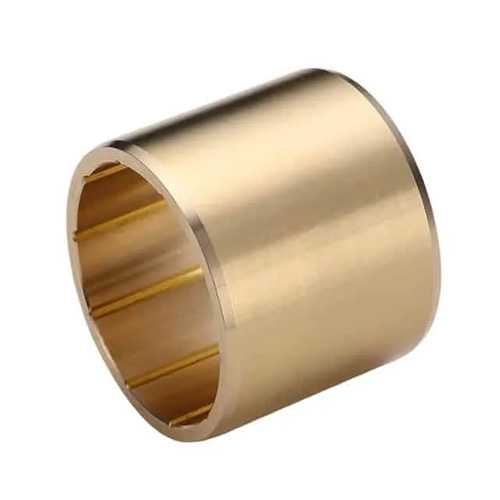Product Name: High Tensile Brass Bushes
Manufacturing, Applications, Alloys, Specifications, and FAQs
Introduction: High tensile brass bushes are critical components in various industries, known for their strength, corrosion resistance, and outstanding wear characteristics. Whether you’re an engineer, manufacturer, or simply curious about these versatile components, this comprehensive guide will provide you with all the information you need. In this article, we will delve into the manufacturing process, applications, brass alloy varieties, specifications, technical data, and frequently asked questions regarding high tensile brass bushes.
Manufacturing Process: High tensile brass bushes are primarily manufactured through the centrifugal casting process. This method ensures a uniform distribution of alloying elements, minimizing impurities. By rotating a mold while pouring molten high tensile brass, cylindrical shapes are formed, which are then machined to meet specific requirements.
Sizes: High tensile brass bushes are available in various sizes to meet the diverse needs of different industries. Common size ranges include inner diameters ranging from 1/4 inch to 16 inches or more, outer diameters from 1/2 inch to 20 inches, and lengths from 1 inch to 24 inches or longer. Custom sizes can also be produced to accommodate unique project requirements.
Applications: High tensile brass bushes have a wide range of applications due to their exceptional properties. Some common applications include:
- Automotive Industry: Used in vehicle suspension systems and engine components.
- Machinery Manufacturing: Employed in manufacturing machinery such as lathes and milling machines.
- Construction: Utilized in heavy construction equipment like cranes and bulldozers.
- Railway Industry: Found in railway couplings, brake systems, and rolling stock components.
- Aerospace: Used in aircraft landing gear and structural components.
- Marine Industry: Essential for marine equipment subjected to harsh seawater conditions.
Alloys: High tensile brass bushes are manufactured using various brass alloys. Common alloys include:
- C83600 (SAE 40): Known for its excellent strength and corrosion resistance, making it suitable for heavy-duty applications.
- C93200 (SAE 660): Offers good bearing properties, making it ideal for applications where friction and wear resistance are essential.
- C95400 (SAE 63): This alloy provides high tensile strength and resistance to shock loads, making it suitable for heavy machinery components.
Specifications: High tensile brass bushes must adhere to specific industry specifications, such as ASTM B505 and SAE J461, which ensure quality and consistency in their manufacturing and use.
Technical Data Sheet: For detailed technical information, consult the manufacturer’s technical data sheet for the specific high tensile brass alloy you plan to use. These sheets provide information on mechanical properties, chemical composition, and more.
FAQs:
Q1. Are high tensile brass bushes suitable for high-temperature applications? A1. High tensile brass bushes have good heat resistance, but their suitability for high-temperature applications depends on the specific alloy and temperature range. It’s essential to consult with the manufacturer for recommendations based on your specific use case.
Q2. Can I obtain custom-sized high tensile brass bushes for my project? A2. Yes, many manufacturers offer custom sizing services to meet your project’s unique requirements.
Q3. What maintenance is required for high tensile brass bushes? A3. High tensile brass bushes are generally low-maintenance. Regular inspection for wear and proper lubrication is usually sufficient to ensure their longevity.
Q4. How do I choose the right alloy for my application? A4. The choice of alloy depends on factors like load, friction, and wear. Consulting with a materials engineer or the manufacturer will help you select the best alloy for your specific needs.
In summary, high tensile brass bushes are versatile components widely used across various industries for their strength, corrosion resistance, and wear characteristics. Whether you are a manufacturer, engineer, or someone seeking to understand these essential components, this guide equips you with the information needed to make informed decisions about their selection and use.


